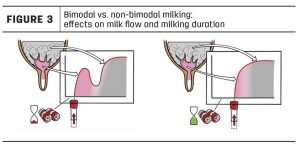
It has not been unusual to see large price declines in other years It has also not been usual to see large price increases either. Most recently has been large price increase in June 2020 when Class III milk price jumped $8.90 from May. Price then dropped $8.11 from July to September of that same year. That was a year of record volatility. September 2014 through February 2015 also recorded a large price decline of $9.46 per cwt. There have also been some substantial price increases, again referring back to 2020 when price increased $8.90 from May to June. From January 2004 through May 2004, Class III price increased $8.97. Generally, other increases and decreased have been less dramatic with prices moving in a trend with less volatility.
Historically, the market has generally followed a seasonality when combining multiple year together. Milk price followed a pattern of a slight increase into the February and March time period with prices moving lower into spring flush as more milk was received by manufacturing and bottling plants leaving plants full and spot milk at a discount due to abundance. Price then began trending higher as milk production deceased in summer and schools reopened requiring more milk to supply school accounts. This was followed with increasing demand in preparation for the holidays with prices peaking in the months of September or October. Prices varied from year to year along with the amount of price movement. However, there was a seasonality. The chart below shows how the dairy markets have departed from the usual and seasonal.
However, that has changed over the past 2 1/2 years and it seems a seasonality has thing of the past. This has not only taken place in the dairy industry but in other commodity markets as well. Some of the back-testing programs that have been used to indicate the potential for profit rely heavily on a seasonality. Those programs that have attempted to predict profitability have been very inaccurate over the past two years. There have been many more outside influences whether they be policies within the U.S. or influences impacting the markets on a global level. None of us have lived through a global pandemic. The Ukrainian war with Russia, the severe drought in areas of the U.S. and Europe, the looming water shortages that may have substantial ramification to food production and the lifestyle and livelihood of people living in those areas, the lack of employees to keep businesses running efficiently to supply good and services and high inflation. These have all had an impact on derailing seasonality.
It has become more important to not rely on seasonality to hedge milk or grain prices, but to take advantage of good prices at any time of year. Of course, when taking a hedge position, one needs to know their cost of production as best they can. That has been a bit of a challenge this year due to the uncertainty of feed, fuel, and other input costs, but a best assessment still needs to be made. This will help you to be more confident in hedging at any time of the year. There are various strategies that can be implemented to protect both feed and milk prices. Give us a call and we can help you with that.
I will be at the World Dairy Expo this year in Madison, Wisconsin in the AgMarket.net booth TC 664. If you are making plans to attend, please stop by the booth to say Hi and see what we have to offer. The dates for the trade show are October 4th – October 7th.
Robin Schmahl is a commodity broker with AgDairy, the dairy division of John Stewart & Associates Inc. (JSA). JSA is a full-service commodity brokerage firm based out of St. Joseph, MO. Robin’s office is located in Elkhart Lake, Wisconsin. Robin may be reached at 877-256-3253 or through the website www.agdairy.com.
The thoughts expressed and the basic data from which they are drawn are believed to be reliable but cannot be guaranteed. Any opinions expressed herein are subject to change without notice. Hypothetical or simulated performance results have certain inherent limitations. Simulated results do not represent actual trading. Simulated trading programs are subject to the benefit of hindsight. No representation is being made that any account will or is likely to achieve profits or losses similar to those shown. There is risk of loss in trading commodity futures and options on futures. It may not be suitable for everyone. This material has been prepared by an employee or agent of JSA and is in the nature of a solicitation. By accepting this communication, you acknowledge and agree that you are not, and will not rely solely on this communication for making trading decisions.























